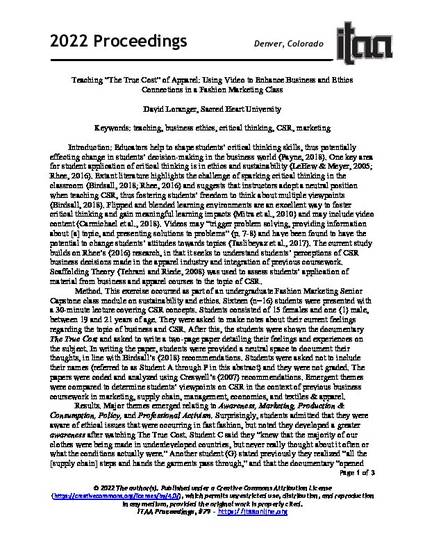
Presentation
Teaching the True Cost of Apparel
International Textile & Apparel Association
(2022)
Abstract
Educators help to shape students’ critical thinking skills, thus potentially effecting change in students’ decision-making in the business world (Payne, 2018). One key area for student application of critical thinking is in ethics and sustainability (LeHew & Meyer, 2005; Rhee, 2016). Extant literature highlights the challenge of sparking critical thinking in the classroom (Birdsall, 2018; Rhee, 2016) and suggests that instructors adopt a neutral position when teaching CSR, thus fostering students’ freedom to think about multiple viewpoints (Birdsall, 2018). Flipped and blended learning environments are an excellent way to foster critical thinking and gain meaningful learning impacts (Mitra et al., 2010) and may include video content (Carmichael et al., 2018). Videos may “trigger problem solving, providing information about [a] topic, and presenting solutions to problems” (p. 7-8) and have been found to have the potential to change students’ attitudes towards topics (Taslibeyaz et al., 2017). The current study builds on Rhee’s (2016) research, in that it seeks to understand students’ perceptions of CSR business decisions made in the apparel industry and integration of previous coursework. Scaffolding Theory (Tehrani andRiede, 2008) was used to assess students’ application of material from business and apparel courses to the topic of CSR.
Keywords
- teaching,
- business ethics,
- critical thinking,
- CSR,
- marketing
Disciplines
Publication Date
Fall 2022
Location
Denver, CO
Citation Information
David Loranger. "Teaching the True Cost of Apparel" International Textile & Apparel Association (2022) Available at: http://works.bepress.com/david-loranger/28/
